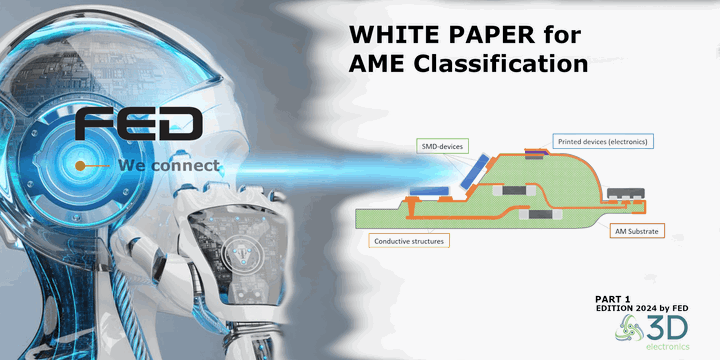A Compact Evolved Antenna For 5G Communications

This research paper, 'A Compact Evolved Antenna for 5G Communications,' was authored by I. Marasco, G. Niro, V. M. Mastronardi, F. Rizzi, A. D’Orazio, M. De Vittorio, and M. Grande.
Overview
This research paper studies a new miniature antenna design for 5G communications. The prime objective is to design a flexible, small-sized antenna for the wearable and IoT devices which are now being demanded more with the coming up of 5G and near future 6G networks. Advanced technologies and materials have been taken into account in order to solve the ordinary compact antenna problems.
The antenna presented in this paper is fabricated on a flexible polyethylene naphthalate (PEN) substrate using a novel process of three-layer 3D inkjet printing and an accurate alignment step. A major innovation in this design, presented herein, is the use of a Split Ring Resonator (SRR) at enhancing the radiation properties which is between the top and ground plane of the antenna.
Highlight on Nano Dimension Technology
The configuration of the antenna is built with Nano Dimension's DragonFly LDM™ 3D printer, where this technology becomes a part of the process. The complex, multi-layered structures of the antenna can be printed with high resolution and precision. It is of silver-based; this AgCite conductive ink consists of silver nanoparticles. The printer works at an optimal temperature of 140°C, where the ink should cure and sinter properly.
This new application of 3D printing technology becomes critical in realizing very high precision that must be made in ensuring several layers, as portrayed by the antenna structure, are properly aligned in meeting the design. The most important function of the 3D printer in the fabrication process is its multi-material capability to realize the potential of the design.
Key Concepts
Flexible and Wearable Electronics: The paper highlights the interest that is developing in flexible and bendable electronics, especially for use in wearable systems, and the need for compact antennas with good radiation properties.
Antenna Miniaturization: The design of the antenna is approached to keep the small size of the antenna while maintaining the optimal performance possible, through a genetic algorithm that will help in effective optimization of the geometry.
Metamaterials: Incorporation of metamaterials, especially SRRs, is an important innovation that will enhance the radiation efficiency of the antenna without increasing the physical size of the antenna.
3D Printing Technology: The article introduces the role of Nano Dimension DragonFly LDM™ 3D printer, which allows high resolution multi-material printing that will be essential for the intricate structure of the antenna.
Genetic Algorithms in Design: The application of genetic algorithms is central to optimize the design of the antenna in order to meet the very demanding specifications of 5G communication systems.
Table of Contents
Introduction: Summary of Challenges and Significance in Designing Compact, Flexible Antennas for 5G Applications
Genetic Algorithm: Description of the different ways genetic algorithms are applied in antenna design optimization.
Antenna Design and Split Ring Resonator: This gives a description of the structural constituents of the antenna and the role of the SRR to enhance the performance of this antenna.
Fabrication: Descriptions on how the design was fabricated using a Nano Dimension DragonFly LDM™ 3D printer.
Characterization: Examination of how the antenna performed, with respect to simulations and real-world measurements.
Conclusion: Summary and potential future applications of the developed antenna design.
Related Articles

Cube Satellites: Paving The Way For The Future Of Space Activities





